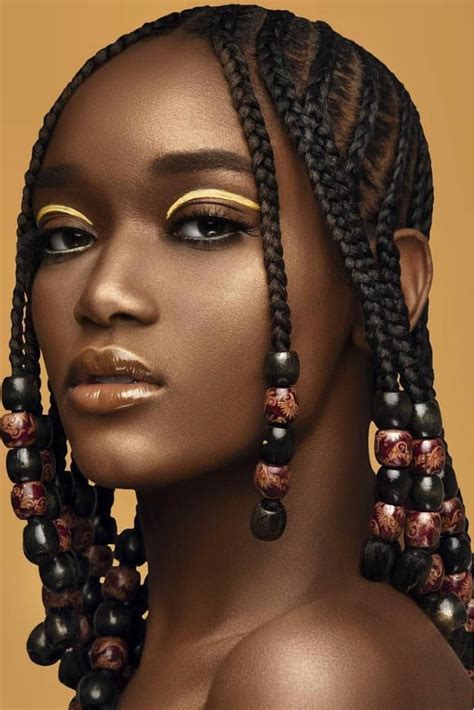Introduction
The rich tapestry of black hair defies categorization, embodying both a timeless legacy and a vibrant contemporary expression. From intricate cornrows to bold afros, each hairstyle serves as a canvas for storytelling, beauty, and empowerment. This article delves into the multifaceted world of black hair, exploring its historical significance, cultural impact, and the dazzling array of hairstyles that have captivated the world.

Historical Significance: A Legacy Rooted in Ancestry
Black hair has been a symbol of identity, resistance, and resilience throughout history. In ancient Africa, hairstyles such as cornrows and dreadlocks held cultural, social, and spiritual significance. They signified tribal affiliations, marked rites of passage, and denoted social status.
During the transatlantic slave trade, hair became a weapon of both oppression and liberation. Enslaved Africans were often forced to cut their hair short, a humiliating act that sought to strip them of their cultural heritage. However, many Africans found solace and defiance in the intricate hairstyles they created with the limited means at their disposal.
Cultural Impact: A Reflection of Expression and Empowerment
Black hair continues to play a pivotal role in shaping cultural identity, serving as a means of self-expression and empowerment. In the 1960s and 1970s, the natural hair movement became a symbol of black pride and empowerment, as individuals embraced their natural textures and styles. Today, black hairstyles continue to challenge beauty norms and celebrate the unique beauty of African hair.
The Spectrum of Black Hairstyles: From Timelessness to Innovation
The versatility of black hair allows for an endless array of hairstyles, each with its own unique appeal and history. Here are some of the most popular and iconic styles:
- Cornrows: These intricate braids are a protective style that originated in ancient Africa. They can be styled in a variety of patterns, making them both functional and fashionable.
- Dreadlocks: Also known as locs, dreadlocks are formed by the natural matting of hair. They have been worn by Rastafarians and other spiritual traditions for centuries, and have become a symbol of cultural pride and rebellion.
- Twists: Twists are created by twisting sections of hair together. They can be styled in a variety of sizes and patterns, and can be worn by both men and women.
- Afros: Afros are characterized by their large, voluminous shape. They became a symbol of black pride and liberation during the 1960s and 1970s, and continue to be a popular style today.
- Braids: Braids are a versatile style that can be worn in a variety of ways. They can be simple or intricate, and can be adorned with beads or other accessories.
- Box Braids: Box braids are a type of braid that is created by dividing the hair into small squares and braiding each square individually. They are a popular protective style that can be worn for extended periods of time.
- Weaves: Weaves involve adding extensions to natural hair to create a fuller, longer, or different-textured look. They can be made from synthetic or human hair, and can be styled in a variety of ways.
Benefits of Black Hairstyles: Nurturing Health and Embracing Beauty
Beyond their aesthetic appeal, black hairstyles also offer numerous benefits:
- Protection: Protective styles like cornrows, dreadlocks, and weaves help to prevent breakage and split ends, promoting hair health.
- Moisturization: Braiding and twisting hair helps to distribute natural oils evenly, resulting in healthier, more moisturized locks.
- Versatility: Black hairstyles are incredibly versatile, allowing for endless possibilities in terms of styling and customization.
Styling Black Hair: A Canvas for Creativity and Expression
Styling black hair requires a unique set of techniques and products. Here are some tips for achieving beautiful, healthy black hair:
- Moisturize regularly: Black hair is naturally dry, so it’s important to moisturize it regularly to prevent breakage. Use products specifically designed for black hair.
- Detangle gently: Detangling black hair can be a challenge, but it’s important to do it gently to avoid breakage. Use a wide-toothed comb or a detangling brush.
- Use protective styling: Protective styles like braids, dreadlocks, and weaves can help to prevent damage and breakage.
- Avoid harsh chemicals: Harsh chemicals like bleach and relaxers can damage black hair. Use these products sparingly, if at all.
- Get regular trims: Regular trims can help to remove split ends and keep hair healthy.
Common Hair Concerns and Solutions for Black People
Black people are prone to certain hair concerns, such as dryness, breakage, and thinning. Here are some common concerns and their solutions:
- Dryness: Black hair is naturally dry, so it’s important to moisturize it regularly. Use products specifically designed for black hair.
- Breakage: Breakage can be caused by a number of factors, including harsh chemicals, heat styling, and poor hair care practices. To prevent breakage, use gentle hair care techniques, avoid harsh chemicals, and get regular trims.
- Thinning: Thinning hair can be caused by a number of factors, including genetics, hormonal imbalances, and certain medical conditions. If you’re experiencing hair thinning, talk to a doctor or dermatologist to determine the cause and find the best treatment options.
Conclusion: Celebrating the Beauty and Significance of Black Hair
Black hair is a vibrant tapestry that weaves together cultural heritage, personal expression, and beauty. From timeless cornrows to bold afros, each hairstyle tells a story of resilience, pride, and creativity. By embracing the beauty and significance of black hair, we celebrate the rich diversity of our human tapestry.
